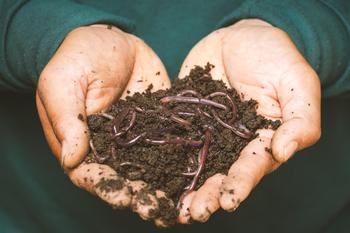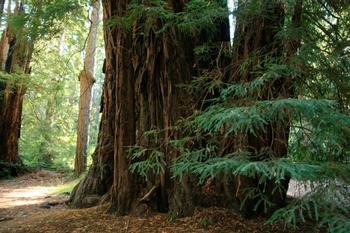Want to help mitigate climate change? Treat your soil like gold.
-
Marie Narlock
-
Companies worldwide are spending big bucks inventing ways to pull carbon from the atmosphere to combat global warming. This probably gives Mother Nature a good chuckle, as she comes equipped with her own built-in system.
 There is more carbon sequestered in the planet's soils than in all the world's plants and atmosphere combined. Photo: Sippakorn Yamkasikorn, unsplash
There is more carbon sequestered in the planet's soils than in all the world's plants and atmosphere combined. Photo: Sippakorn Yamkasikorn, unsplashPlants take in carbon dioxide from the air and store the carbon in their leaves, trunks, roots, and, especially, the soil. Even long after plants die, the carbon can stay locked underground. In fact, there’s more carbon sequestered in the planet’s soils than in all the world’s plants and atmosphere combined. Our forests, grasslands, and oceans are a part of this natural “carbon sink.”
It’s a beautiful thing, the carbon cycle, not unlike the closed circulatory system we all carry in our bodies. All the carbon on Earth right now is exactly what we’ve always had. It just keeps cycling from the atmosphere into plants and other living things and then back into the atmosphere over and over again.
Only there’s a problem. By burning fossil fuels that spew carbon dioxide, we’ve exceeded Mother Nature’s storage capacity. Suddenly she isn’t smiling anymore. Unable to keep a lid on the excess CO2, it oozes into the atmosphere and creates greenhouse gases and, well, you know the rest. Because of their longevity, redwood trees store more carbon dioxide per acre than any other forest in the world. Photo: Kevin Casper
Because of their longevity, redwood trees store more carbon dioxide per acre than any other forest in the world. Photo: Kevin CasperQuestion is, can we help?
Fortunately, the answer is yes. You already know about recycling and reusing. Reducing reliance on fossil fuels is practically in our DNA now. But what about storing excess carbon that’s already creating problems? Can we store carbon in our gardens the way nature intended?
Once again, the answer is yes – and the soil beneath your feet holds the answer. By unlocking its profound ability to capture carbon, you can help mitigate climate change (and grow a beautiful garden!).
Healthy soil is loaded with fungi and microorganisms, the tiny creatures that feed on roots, as well as carbon from dead and decaying plants and animals. It’s crumbly and allows air and water to move through it. To achieve this loamy soil nirvana, focus on three important steps. To build healthy soil, don't disturb it, avoid synthetic fertilizers, and fill your garden with a wide variety of plants. Photo: ukgardenphotos
To build healthy soil, don't disturb it, avoid synthetic fertilizers, and fill your garden with a wide variety of plants. Photo: ukgardenphotosFirst, don’t disturb it. Remember, there’s a lot going on under your feet. When you dig, turn, or rototill soil, it’s like a tornado and earthquake all at once for the underground organisms, even the microscopic ones. Exposing them to excess oxygen and sunlight also accelerates the loss of stored carbon into the atmosphere. Also, don’t walk on bare soil, especially when it’s wet, to avoid compacting it.
Second, avoid synthetic fertilizers. Producing and transporting fertilizers emits greenhouse gases. When added to soil, these fertilizers can cause soil microorganisms to chow down on organic matter. Unfortunately, this increase in appetite reduces carbon in the soil over time. Instead, use organic compost and, if necessary, other organic amendments. Avoid peat moss, however. Although peatlands cover just three percent of the Earth’s surface, they store a whopping 30 percent of soil carbon.
Third, grow a variety of plants and keep soil covered. Not only is it more attractive, but letting soil go bare encourages degradation and weeds and – you guessed it – carbon loss. Instead, keep it covered with a layer of mulch.
Keeping soil in tip-top condition is the best way to maximize its carbon-sequestering capacity. It also helps offset the unfortunate depletion of soil carbon that has occurred in the past century, mostly due to unsustainable land management practices. Recently, some forward-thinking farmers have adopted healthy soil management techniques that improve crop yields and carbon sequestration. This is called carbon farming or regenerative agriculture.
According to one study, restoring Earth’s soil has the capacity to remove 5.5 billion tons of CO2 every year – the equivalent of the annual US greenhouse gas emissions. But you don’t have to be a scientist or a farmer to enjoy the benefits of healthy soil. You can help get Mother Nature smiling again by creating a vibrant garden that’s Earth-friendly and chock full of carbon. Chances are you’ll be smiling, too.



